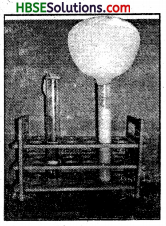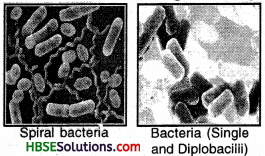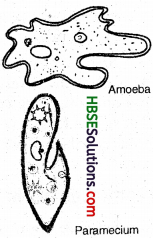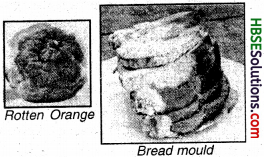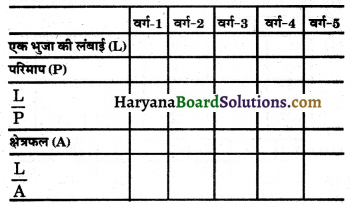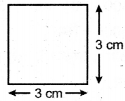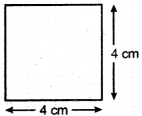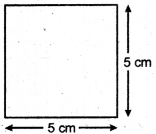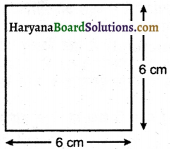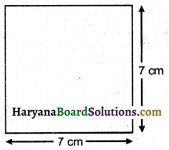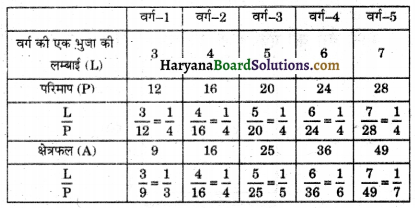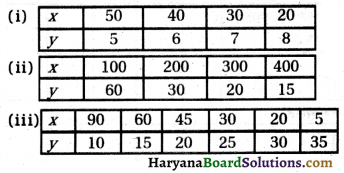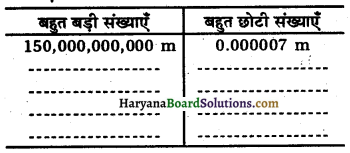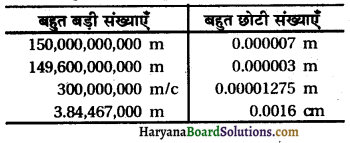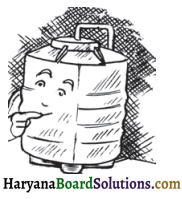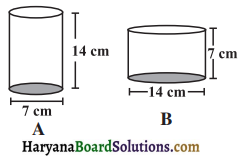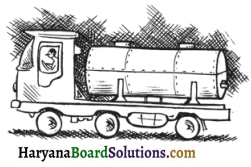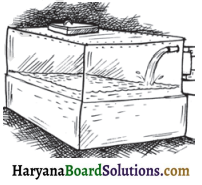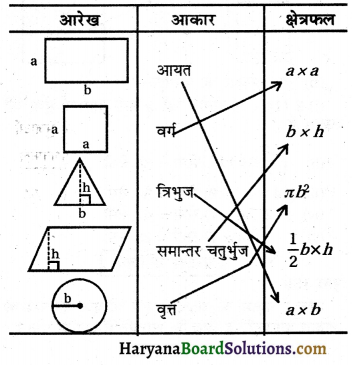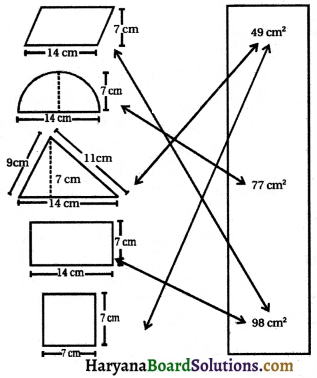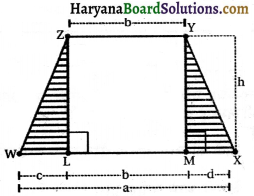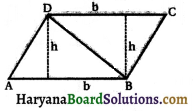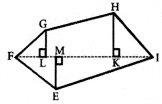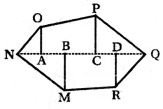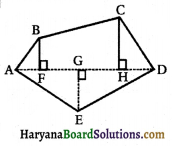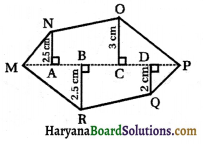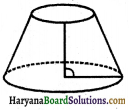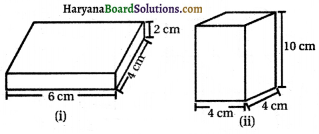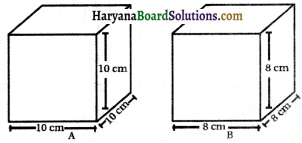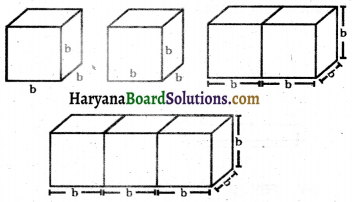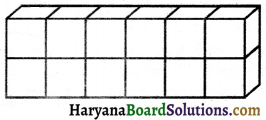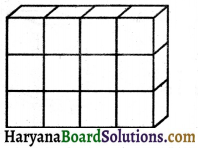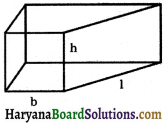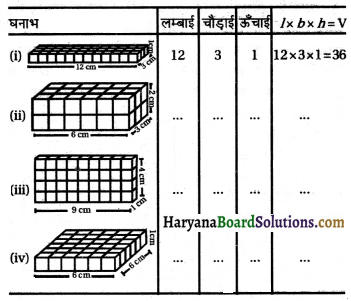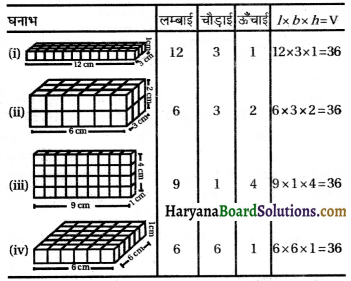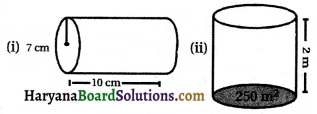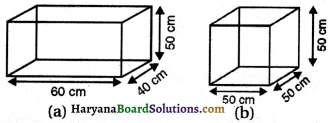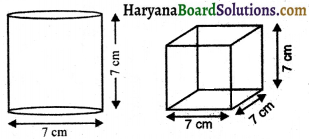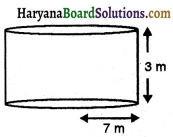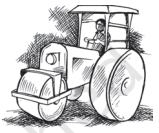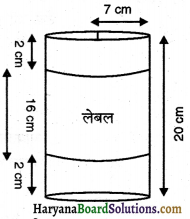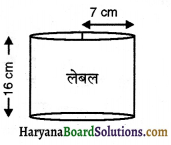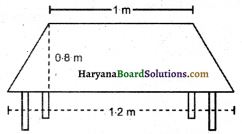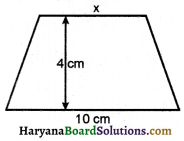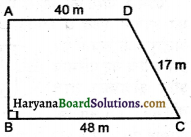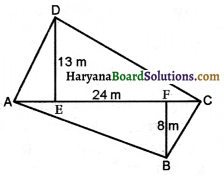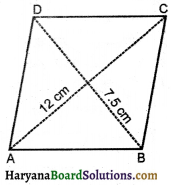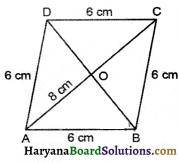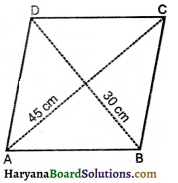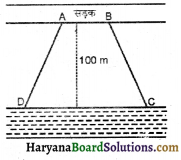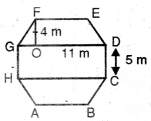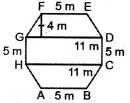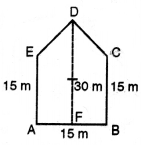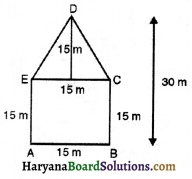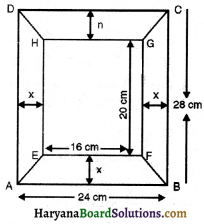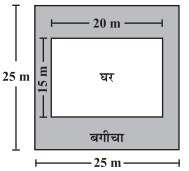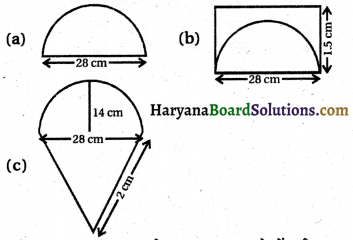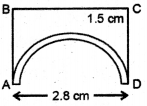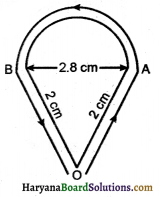HBSE 8th Class Science Solutions Chapter 18 Pollution of Air and Water
Haryana State Board HBSE 8th Class Science Solutions Chapter 18 Pollution of Air and Water Textbook Exercise Questions and Answers.
Haryana Board 8th Class Science Solutions Chapter 18 Pollution of Air and Water
HBSE 8th Class Science Pollution of Air and Water Textbook Questions and Answers
Question 1.
What are the different ways in which water gets contaminated?
Answer:
Water gets contaminated by following ways:
- Water gets contaminated when sewage is disposed off in rivers.
- Chemicals which are harmful and poisonous are thrown in water resources by various industrial units.
- Harmful chemicals used in agricultural process gets mixed with ground water making it unfit for consumption.
- Breeding of microorganisms in water make water polluted.
Question 2.
At an individual level, how can you help reduce air pollution?
Answer:
We can plant tree to reduce the level of carbon dioxide. We can get our vehicles serviced well to reduce uncomplete consumption of fuels. We can also reduce air pollution by saying no to crackers during Diwali celebrations.
![]()
Question 3.
Clear, transparent water is always fit for drinking. Comment.
Answer:
Water which is clear and through which we can see is fit for consumption because this type of water is free from pollutants. Transparent water means no microorganisms and no dust particles.
Question 4.
You are a member of the municipal body of your town.
Make a list of measures that would help your town to ensure the supply of clean water to all its residents.
Answer:
- To get clean water in every household, it is necessary that water reaching houses should be treated water. Water is treated in sewage plants, to make it free from physical, chemical and biological impurities.
- Strict laws should be enforced on industrial units, which dispose polluted water in water resources.
- Open defecation in water resources by slum dwellers should be strictly prohibited.
- Chlorine tablets should be distributed for purification of water during rainy season.
- People should be made aware and motivated to keep water resources clean.
Question 5.
Explain the differences between pure air and polluted air.
Answer:
Pure air is free from harmful gases which can be poisonous in nature. Pure air has balanced quantity of all its constituent gases and it is free from other germs. This type of air is fit for breathing. On the other hand polluted air has poisonous gases and other suspended impurities like dust and smoke. It is unfit for consumption.
Question 6.
Explain circumstances leading to acid rain. How does acid rain affect us?
Answer:
Acid rain is caused due to mixing of poisonous gases with rain. When our industrial units emit poisonous gases like sulphur dioxide and nitrogen dioxide, these gases react with moisture present in air and form nitric acid and sulphuric acid. These acids fall on the earth with rain making rain water acidic and harmful.
Acid rain causes the corrosion of buildings and make food grains, fruits and vegetables on which it fall, unfit for consumption.
Question 7.
Which of the following is not a greenhouse gas?
(a) Carbon dioxide
(b) Sulphur dioxide
(c) Methane
(d) Nitrogen
Answer:
Sulphur dioxide.
![]()
Question 8.
Describe the ‘Green House Effect’ in your own words.
Answer:
Green house effect means warming the environment. When the rays of sun reach earth, some of the heat is absorbed by the earth. Rest of it is reflected back by the earth. Some of the heat is trapped by the environment of the earth. This causes warming of the environment, which is necessary for the sustaining life. This trapping of the heat is called green house effect.
Question 9.
Prepare a brief speech on global warming. You have to deliver the speech in your class.
Answer:
Continuous increase in the temperature of the earth is called global warming. It it caused by the pollution of air, excessive heat trapped by the green house gases, because the amount of green house gases has increased in the environment. Global warming is a threating phenomenon because we may have to face dire consequences due to Global warming.
Question 10.
Describe the threat to the beauty of the Taj Mahal.
Answer:
Increasing air pollution has posed a threat to the beauty of the Taj Mahal. Excessive poisonous gases and smoke has started to discolour the white marble of the Taj Mahal. Acid rains due to increasing air pollution has started to corrode the marble, thus making Taj Mahal loose its beauty.
Question 11.
Why does the increased level of nutrients in the water affect the survival of aquatic organisms?
Answer:
Addition of nutrients in water flourishes the growth of microorganisms like algae. When these microorganisms die, they become food of bacteria. When bacteria become active, they consume a lot of oxygen present in water. Decrease in oxygen in water, becomes trouble for other aquatic animals and they start dying due to insufficient amount of oxygen to breath.
Extended Learning – Activities and Projects
Question 1.
In some cities, a pollution check has been made compulsory for vehicles. Visit a petrol pump in order to learn about the process of conducting a pollution check. You may systematically record your findings in the following areas:
(i) Average number of vehicles checked per month.
(ii) Time taken to check each vehicle.
(iii) Pollutants checked for.
(iv) The process of testing.
(v) Permissible levels of emission of various gases.
(vi) Measures taken if the emitted gases are above the permissible limits.
(vii) How frequently is a pollution check required?
Answer:
For self attempt.
![]()
Question 2.
Conduct a survey in your school to investigate various environment related activities that have been undertaken. The class can divide itself into two groups, with each group looking at a different area. For example, one group can find out whether there is an environment club in the school. What are its objectives? What is its calendar of events? How can you become a member?
If your school does not have such a club, you can even think of starting one along with a few of your friends.
Answer:
For self attempt.
Question 3.
Organise a field visit to a river in or around your town with the help of your teachers. Observations followed by discussion could focus on:
(i) The history of the river.
(ii) Cultural traditions.
(iii) Role of the river in meeting the town’s water needs.
(iv) Pollution concerns.
(v) Sources of pollution.
(vi) Effects of pollution on the people living by the riverside as well as those living far away.
Answer:
For self attempt.
Question 4.
Find out with the help of your teachers and the internet (if possible), whether there are any international agreements to control global warming. Which are the gases covered under these agreements?
(i) www.edugreen.teri.res.in/explore/air/ air.htm
(ii) www.edugreen.teri.res.in/explore/water/ pollu.htm
(iii) www.cpcb.nic.in/citizen’s%Charter/ default_citizen’s.html
(iv) coe.mse.ac.in/kidswater.asp
(v) coe.mse.ac.in/kidsair.asp
Answer:
For self attempt.
HBSE 7th Class Science Pollution of Air and Water Important Questions and Answers
Very Short Answer Type Questions
Question 1.
What is a pollutant?
Answer:
Pollutant is an undesired and harmful substance.
Question 2.
What is air pollution?
Answer:
Addition of pollutants to air is called air pollution.
Question 3.
Name any two air pollutants.
Answer:
Smoke and sulphur dioxide.
Question 4.
Name any two natural pollutants.
Answer:
Forest fire and erruption in volcanoes.
![]()
Question 5.
What is smog?
Answer:
Mixture of smoke and moisture is called smog.
Question 6.
Name two chemicals causing acid rains.
Answer:
Sulphur dioxide and nitrogen dioxide.
Question 7.
Which gas is responsible for depletion of ozone layer?
Answer:
Chlorofluorocarbon.
Question 8.
Where CFC is used?
Answer:
CFC is used for refrigeration.
Question 9.
What effect does acid rain has on building?
Answer:
It corrodes the buildings.
Question 10.
Name any two green house gases.
Answer:
Methane and carbon dioxide.
Question 11.
Which phenomenon causes global warming?
Answer:
Green house effect.
Question 12.
Write any one harmful effect of global warming.
Answer:
It can cause flood by melting glaciers.
Question 13.
Which is the main constituent gas of air?
Answer:
Nitrogen about 78%.
Question 14.
What is the percentage of oxygen in air?
Answer:
21%.
Question 15.
Which industry is the main source of gaseous pollutants like sulphur dioxide and nitrogen dioxide?
Answer:
Petroleum refineries.
![]()
Question 16.
From what does the ozone layer – protect us?
Answer:
Ozone layer protects us from ultraviolet rays of sun.
Question 17.
What reduces the visibility in air?
Answer:
Small suspended particles emitted by automobiles using diesel as fuel.
Question 18.
Which refinery is producing pollutants near the Taj Mahal?
Answer:
Mathura oil refinery.
Question 19.
What is Marble cancer?
Answer:
Corrosion of marble due to acid rain is called marble cancer.
Question 20.
Which fuel is being used as the pollution free fuel?
Answer:
CNG and LPG.
Question 21.
What is trapping of radiations of sun by the atmosphere of the earth, called?
Answer:
Green house effect.
Question 22.
Which gas is mainly the green house gas?
Answer:
Carbon dioxide.
Question 23.
Which substances pollute water?
Answer:
Sewage, toxic chemicals, silt etc.
Question 24.
Name the Indian river which is considered as one of the ten most polluted rivers in world?
Answer:
Ganga.
Question 25.
What pollutes Ganga?
Answer:
Untreated sewage, dead bodies, garbage etc.
Question 26.
What is the plan, implemented to save Ganga, called?
Answer:
Ganga Action Plan.
Question 27.
Which chemicals released in water leads to toxicity in animals and plants?
Answer:
Arsenic, lead and fluorides.
Question 28.
What do you mean by potable water?
Answer:
Water which is suitable for drinking is called potable water.
Question 29.
Which chemical is used to purify water?
Answer:
Chlorine.
Question 30.
Which physical qualities should we look for in drinking water?
Answer:
Clearness, transparency and odour.
![]()
Short Answer Type Questions
Question 1.
Describe what is pollution.
Answer:
Pollution can be described as addition of unwanted and undesired harmful substances in any natural resource. Addition of these substances spoil the natural resources and make them unfit for consumption by men and other living beings. Air pollution, water pollution, soil pollution etc. are various types of pollutions.
Question 2.
Describe air pollution.
Answer:
Addition of poisonous and harmful substances in air is called air pollution. Air gets polluted when poisonous gases like sulphur dioxide, nitrogen dioxide and other oxides of nitrate get mixed up in air. It is also polluted by smoke emitted by industries using coal and also the smoke emitted by vehicles.
Question 3.
Write any three causes of air pollution.
Answer:
Following are various causes of air pollution:
- Smoke emitted due to fires in forests.
- Poisonous gases expelled the various industries.
- Poisonous gases emitted by vehicles using petroleum fuels.
Question 4.
What is smog? How is it produced?
Answer:
In winters, we can see a fog like dark layer in the mornings and nights. It reduces the visibility. This is called smog. Smog means fog plus smoke. It is formed due to combination of oxides of mitrates with fog. Various vehicles and industries produce smoke and the nitrates. Thus smog is formed.
Question 5.
What is ozone? How is it helpful for our environment?
Answer:
Ozone is a gas which is very helpful for environment of our earth. It forms a protective layer around the atmosphere of earth. It does not allow the ultraviolet rays of the sun from reaching the earth. U.V. rays can cause great damage to our earth. So, ozone is of great help for our earth.
Question 6.
What is ozone hole or depletion of ozone layer?
Answer:
A gas named ozone forms a protective layer around the atmosphere of the earth. It protects the earth from the ultra-violet rays of the sun. But some chemicals used in refrigeration causes damage to this layer. CFCs cause tearing away of this layer. This is called depletion of ozone layer. At some points, this layer is depleted completely and holes are created. These holes are called ozone holes.
Question 7.
What are the harmful effects of air pollution?
Answer:
Air pollution cause many diseases in human beings. Respiratory diseases are commonly caused by air pollution. It causes harm to our building and monuments. It reduces visibility as smog and causes many serious accidents.
Question 8.
How is acid rain caused?
Answer:
When rain water becomes acidic in nature, it is called the acid rain. Different industries produce pollutants like sulphur dioxide and nitrogen dioxide. These gases react with moisture and produce sulphuric acid and nitric acid. These acids fall on earth along with rain and this is called acidic rain.
![]()
Question 9.
What steps has. Honourable Supreme Court taken to save the Taj Mahal from air pollution?
Answer:
The Supreme Court has given orders that cleaner fuel be used in the near about areas of the Taj Mahal. Fuels like CNG and LPG are considered clean fuel. Moreover petrol should be free from lead. This is called unleaded petrol. Only unleaded petrol can be used in areas near the Taj Mahal.
Question 10.
What is the Green House effect?
Answer:
The sun sends its rays to the earth. Some of these rays are absorbed by the earth and some radiations are reflected back by the earth. Thes reflected radiations are not allowed to leave earth’s atmosphere completely. Some of these radiations are trapped by the earth’s atmosphere and this is called the green house effect.
Question 11.
What is global warming? How is it caused?
Answer:
Increasing temperature of the earth is called global warming. The radiation of the sun, reaching the earth is not being consumed. This is due to the deforestation. The level of CO2 has increased and thus global warming has also increased. CO2 is absorbed by the plants for photosynthesis. So reduced number of plants increases the amount of carbon dioxide in the environment, this causes accumulation of carbondioxide and increases temperature.
Question 12.
How does water get polluted?
Answer:
Water gets polluted when unwanted and harmful chemical substances are added to the water. Untreated sewer and garbage is also added to water resources to pollute water. All these chemicals make water unfit for usage.
Long Answer Type Questions
Question 1.
What is air pollution? How is it caused?
Answer:
When poisonous gases, dirt and smoke get added in the water it pollutes the air and it is called air pollution. Following factors are responsible for air pollution.
(i) Industrial Emissions : Various dangerous and poisonous gases emitted by different industries cause air pollution. Industries using coal and other petroleum products as fuel emit poisonous gases like sulphur dioxide and nitrogen dioxide. These gases further react with moisture present in environment and form their respective acids. These acids along with rain water cause acid rains.
(ii) Vehicles : Unburnt carbon particles emitted by vehicles due to incomplete combustion cause severe air pollution. It contains gases like carbodioxide and carbon monoxide which is highly poisonous. Unburnt carbon particles emitted as smoke also cause phenomenon like smog which reduce visibility besides causing air pollution.
(iii) Natural Pollutant: Natural pollutants like forest fire, volcanic erruption, dust storms etc. also cause air pollution to some extent.
(iv) Other activities of Man : Besides above described causes many other human activities also add to air pollution. Using fuels like cow dung, coal, wood etc. at home for domestic use also pollute the air. Agricultural practices like burning chaff after cultivation etc. also pollute the air. A lot of air pollution is caused due to burning of crackers on Diwali and other celebrations.
![]()
Question 2.
How is water pollution caused?
Answer:
Water pollution is caused by many factors. These pollutants are described below :
(i) Industrial discharges: Various harmful and poisonous chemicals are discharged by various industries directly into water bodies. These chemicals when added in water, spoil it and render it unfit for consumption by living beings.
(ii) Domestic discharges : Sewage from homes are collected and disposed off in rivers nearby. This untreated sewage is one of the prominent causes of water, pollution.
(iii) Religious Rituals : Various religious rituals of different religions also add to certain extent to the water pollution.
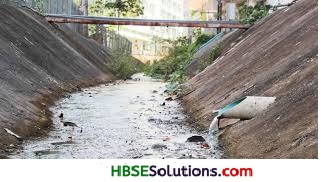
Dispersion of dead bodies or remains of dead bodies in rivers is causing pollution of water. Various other materials are also dispersed in water after performing some rituals. These also make water dirty.
(iv) Other Human activities : Apart from above cited reasons, water is also polluted due to certain other human activities. People wash their clothes on banks of rivers. They take their livestock to rivers for their bathing. They throw their wastage in water bodies and sometimes defecate in open at the banks of rivers. This makes water polluted and unfit for human consumption.
Question 3.
What measures should be taken to control air pollution and water pollution?
Answer:
Air pollution and water pollution are causing a great threat for the human civilization. We should seriously work to control them. Following measures can help us in controlling air and water pollution :
(i) All industrial units should use cleaner fuels and should not release their harmful 4 emission directly into air or water.
(ii) All industrial units throwing their harmful waste products in water, should install treatment or purification plants in their premises so that only treated and purified waste should be released in water bodies.
(iii) All the sewages of cities and villages should treated to destroy harmful physical, chemical and biological impurities before releasing it in water resources.
(iv) All vehicles should use pollution free fuels like CNG, LPG and unleaded petrol. Vehicles should be serviced well to avoid incomplete combustion of fuel.
(v) Smokeless fuels should be provided for domestic usage.
(vi) Electrical crematoriums should be made in all cities as well as in villages.
Question 4.
What are the various harmful effects of air and water pollution?
Answer:
(i) Air and water pollution are both dangerous for human health. They cause various diseases, which are the result of harmful emissions and discharges in air and water. Water brone diseases like Cholera, Typhoid, Infections, etc. are caused. Air pollution causes various respiratory diseases like asthma, allergies and lung cancer etc.
(ii) These pollutions also cause troubles for animals. Water pollution destroy the aquatic life as it causes deficiency of oxygen in water causing death of aquatic animals.
(iii) Various environmental problems like global warming are result of air pollution. Due to increase in level of carbon dioxide, the radiations of sun are not allowed to leave our environment. They get trapped in our environment and temperature of earth gets increased. This is called global warming.
(iv) Fresh and consumable water is getting reduced day by day as water resources are getting polluted very rapidly.
(v) Phenomena like smog, marble-cancer etc. are causing threat to our property and life.
![]()
Pollution of Air and Water Class 8 HBSE Notes
- Addition of unwanted and poisonous substances in air or water is called their respective pollutions.
- Air and water pollution has increased in recent past with industrialization and urbanization.
- Air is a mixture of gases mainly the nitrogen, oxygen and carbon dioxide when any of the harmful gases increase in its percentage, it makes the air polluted.
- Emission of smoke in industries, smoke due to forest fires and smoke emitted by vehicles pollutes the air.
- Smoke, dust of harmful gases emitted during volcanic erruptions, or forest fires or due to dust storms etc. are called the natural air pollutents.
- Unburnt fuel of the vehicles is one of main cause of air pollution.
- Air pollution can give rise to different ailments in human beings. Oxides of nitrogen can cause asthma, cough and wheezing. It can even cause cancer of lungs.
- Pollutants like sulphur dioxide, nitrogen oxide are emitted by industries.
- Gases used in refregeration also cause depletion of ozone layer, which cause further environmental problems like global warming.
- Non-living objects are also effected by air pollution. Discolouring of white marble of Taj Mahal is ah example.
- Deforestation is one of the main cause of air pollution because less amount of carbon dioxide is absorbed by the plants and its amount increases in atmosphere resulting in global warming.
- Addition of undesirable substances like sewage, harmful chemicals etc. to the water cause water pollution.
Polluted water becomes unfit for consumption. - Water is purified before consuming it.
HBSE 8th Class Science Solutions Chapter 18 Pollution of Air and Water Read More »
